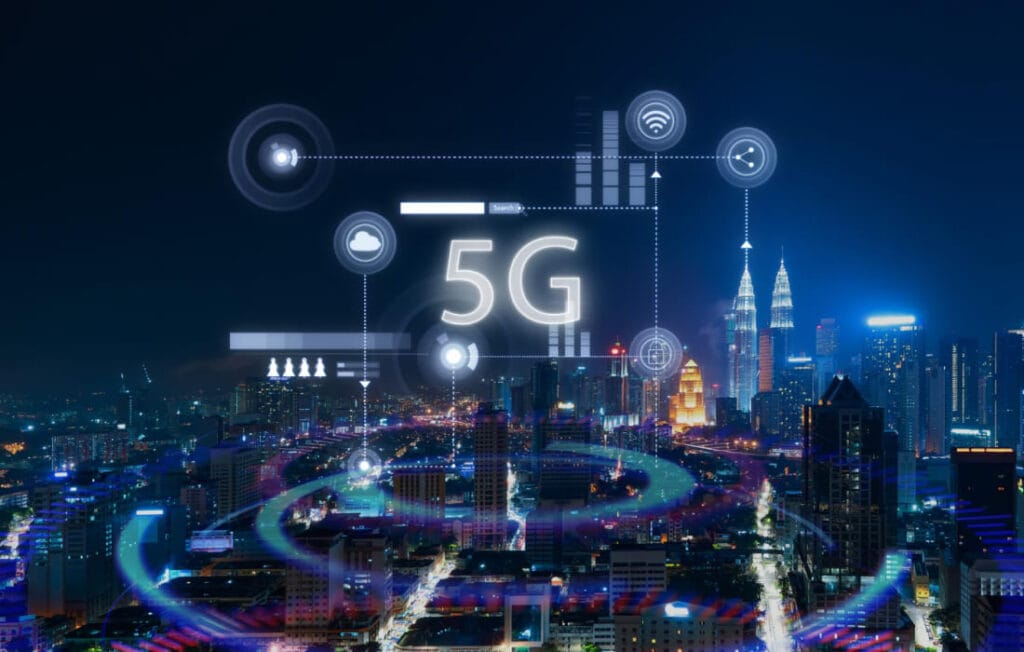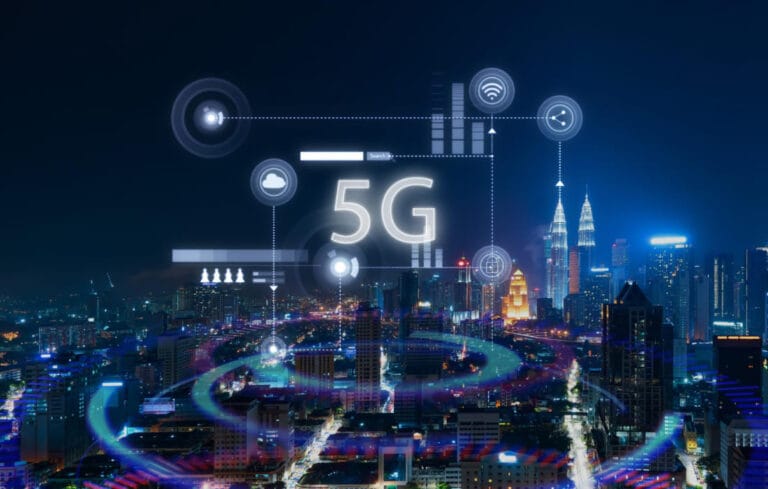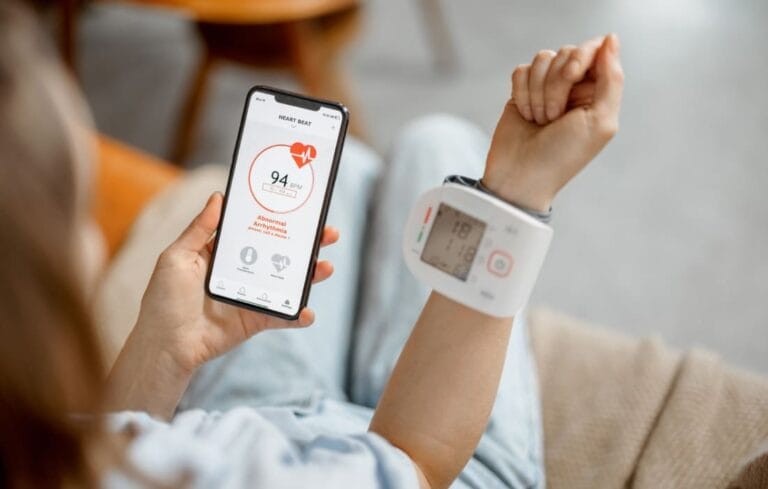The digital age is booming, and 5G is one of its biggest breakthroughs. Moreover, it is faster than earlier networks, enabling hyper-connectivity and intelligent communication. With ultra-fast speeds, low latency, and millions of connections, we are entering a smarter, more connected world.
This advancement has its biggest impact on the Internet of Things (IoT). The Internet of Things connects everyday objects like sensors, machines, vehicles, and appliances. These devices use smart systems to collect, process, and exchange data efficiently. With 5G networks, they operate without lag and enable new innovative solutions.
The countless number of IoT devices will be able to seamlessly communicate. Smart homes will let appliances communicate instantly with zero latency. Autonomous vehicles will use real-time navigation for seamless operation. By combining 5G with the Internet of Things, the world gains unmatched reliability, efficiency, and speed.
This combination enhances technology’s performance and reshapes how humans connect with daily technology.
What is 5G Technology?
5G technology is the fifth type of wireless communication standards. It is wanted to change the way we connect, communicate and consume data. However, previous generations built the foundation, but 5G goes far beyond speed. It serves as a platform enabling smart cities, autonomous vehicles, and advanced industrial automation. The capabilities of 5G are nearly 100 times faster than 4G. However, 5G does not only offer speed, but it also provides reliability, scalability, and responsiveness to the responsiveness criteria.
5G technology is not just a new technology. 5G aims to build an ecosystem of millions of connected devices. It lets people experience seamless, faster wireless communication for mission-driven tasks. With ultra-low lag time of one millisecond, it supports critical uses like remote surgery and self-driving cars. The massive bandwidth of 5G enhances commerce and improves real-time connectivity experiences. Even in crowded areas, such as restaurants, it helps reduce issues from heavy data usage.
Key Differences Between 4G and 5G Technology
Speed: 4G delivers speeds in Mbps, while 5G reaches Gbps for instant, data-heavy tasks.
Latency: 4G latency averages about (50 milliseconds (ms)) and 5G technology latency averages (1 millisecond (ms)).
Connectivity: 5G can connect millions of devices per square kilometer, far exceeding 4G capacity.
Understanding the Internet of Things (IoT)
The Internet of Things (IoT) is a digital ecosystem of connected physical objects. These objects use sensors, software, and networks to collect and share data automatically. IoT devices rarely work alone; they connect to form intelligent, efficient networks. The Internet of Things will transform industries and daily life with smarter, adaptable systems.
In homes, smart thermostats, lighting, and security cameras show how the Internet of Things adds comfort and safety. Wearables like fitness trackers and smartwatches offer personal benefits by monitoring health metrics in one place. Industries use robotics, sensors, and automation to increase productivity and reduce downtime. The Internet of Things also supports healthcare through remote monitoring tools and connected medical devices. That allows doctors to provide faster, data driven care.
The Internet of Things is a revolutionary framework connecting billions of devices worldwide.
How 5G Enhances the Internet of Things (IoT)
The convergence of 5G, the Internet of Things, and smart technologies introduces unmatched features and capabilities. Together, they create intelligent environments across homes, industries, healthcare, and cities with fast speeds and low latency. They also deliver superior energy efficiency and massive connectivity channels.
Faster Data Transfer Speeds in 5G IoT
One major benefit of the 5G Internet of Things is near-instant data exchange. From autonomous vehicles to smart factories and connected buildings, high transfer speeds enable seamless device communication and greater efficiency.
Ultra-Low Latency for Real-Time IoT Devices
The 5G network can also offer ultra-low latency meaning IoT devices can respond in real-time. Real-time responsiveness makes 5G and the Internet of Things vital for mission-critical applications.
Energy Efficiency of IoT Devices with 5G
5G improves IoT device battery life by optimizing power use, making large-scale logistics sustainable.
Greater Reliability and Massive IoT Connectivity
5G infrastructure and the IoT allow reliable connections of millions of IoT devices. This feature supports smart cities, connected infrastructure, and industrial IoT with stable, high-capacity networks.
Real-World Applications of 5G and IoT
The partnership of 5G and the Internet of Things is changing how people, cities and industries function. These innovations let IoT devices connect faster, enabling real-time insights, automation, and efficiencies across industries.
Smart Cities with 5G Technology
Cities are becoming smarter with 5G technology at the centre of development. The 5G Internet of Things improves urban planning with smart traffic signals and connected waste systems.
Healthcare IoT Devices and 5G
Healthcare has been transformed by IoT, with 5G and Internet of Things devices improving patient care. Telemedicine is now common, supported by remote monitoring tools for real-time vital tracking. With many connected devices, faster speeds enhance treatment delivery, improve outcomes, and reduce hospital stays.
IIoT (Industrial Internet of Things) and 5G Network
Factories and industrial spaces depend on the 5G network for powering IoT innovations. Connected machinery, robotics, and predictive maintenance help IIoT devices reduce downtime and boost productivity.
Agriculture and IoT Devices Using 5G
Farmers are increasingly utilizing smart IoT devices to better parcel out crop health, soil quality and livestock behaviour. The 5G internet of things enables precision farming, limits waste of resources, improves the yield and sustainability of agricultural practices.
Challenges of 5G Internet of Things
The 5G Internet-of-Things (IoT) offers incredible opportunity, but also has tremendous obstacles in its path prior to widespread adoption. Security and privacy in 5G IoT are critical, as millions of IoT devices increase breach risks.The challenge of protecting vital information and safeguarding device-to-device communication is a significant challenge.
The cost of implementing a 5G internet is another challenge. Deploying 5G IoT infrastructure requires heavy investment, often unaffordable for certain areas and businesses.
Managing massive data from billions of IoT devices is a major challenge. Still, the 5G IoT enables real-time processing with many benefits. Without proper systems for storage, analysis, and regulation, organizations may struggle to maximize these advantages. Overcoming these challenges will be critical in order for the 5G IoT to scale sustainably.
The Future of 5G and the Internet of Things
The future of connectivity is shaped by the powerful combination of 5G and AI. Together, they accelerate the growth of IoT, creating smarter ecosystems that adapt in real time. AI enables real-time analysis of massive data, driving fast, data-driven decisions. With 5G speed and stability, IoT devices process data and act autonomously. As adoption grows, 5G and the Internet of Things will power exciting innovations in smart homes and beyond.
For homes, 5G connects smart appliances, energy systems, and security for seamless, efficient living. In industries, 5G and the Internet of Things enable automation, predictive maintenance, and robotics to boost productivity. Beyond homes and industries, 5G and the Internet of Things transform healthcare with telehealth and data aggregation. Agriculture benefits from predictive growing and responsive monitoring of temperature and moisture. Transportation improves with smarter infrastructure, enhanced safety, and data-driven government planning.
These sectors each rely on real time data to reduce risk and improve their safety, sustainability, and decision making.
5G technology will be the backbone of a hyper-connected world and digital transformation.
Summary
The rise of 5G marks a pivotal shift in the digital age. It unlocks new possibilities for the Internet of Things across industries. With high speed, low latency, and efficient IoT devices, 5G drives innovation forward. This convergence of 5G and the Internet of Things enables smarter, more connected living. From healthcare to smart cities, the impact will be transformative. For businesses and individuals, adopting 5G IoT early provides a competitive edge in tomorrow’s connected world.







